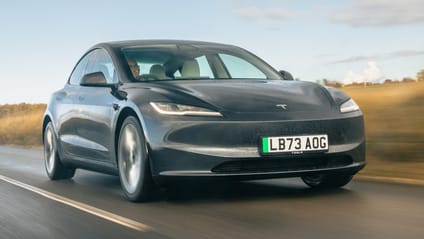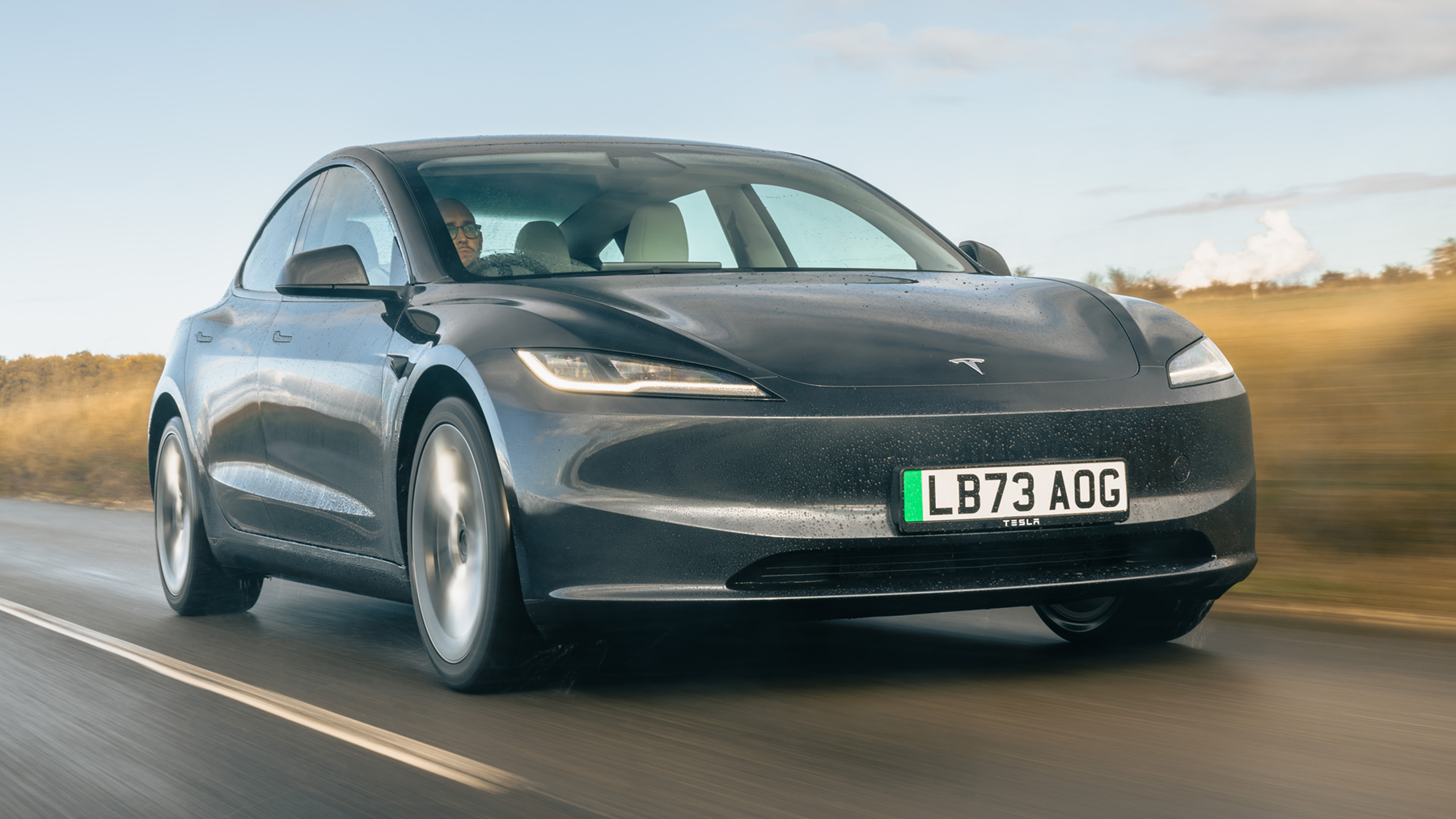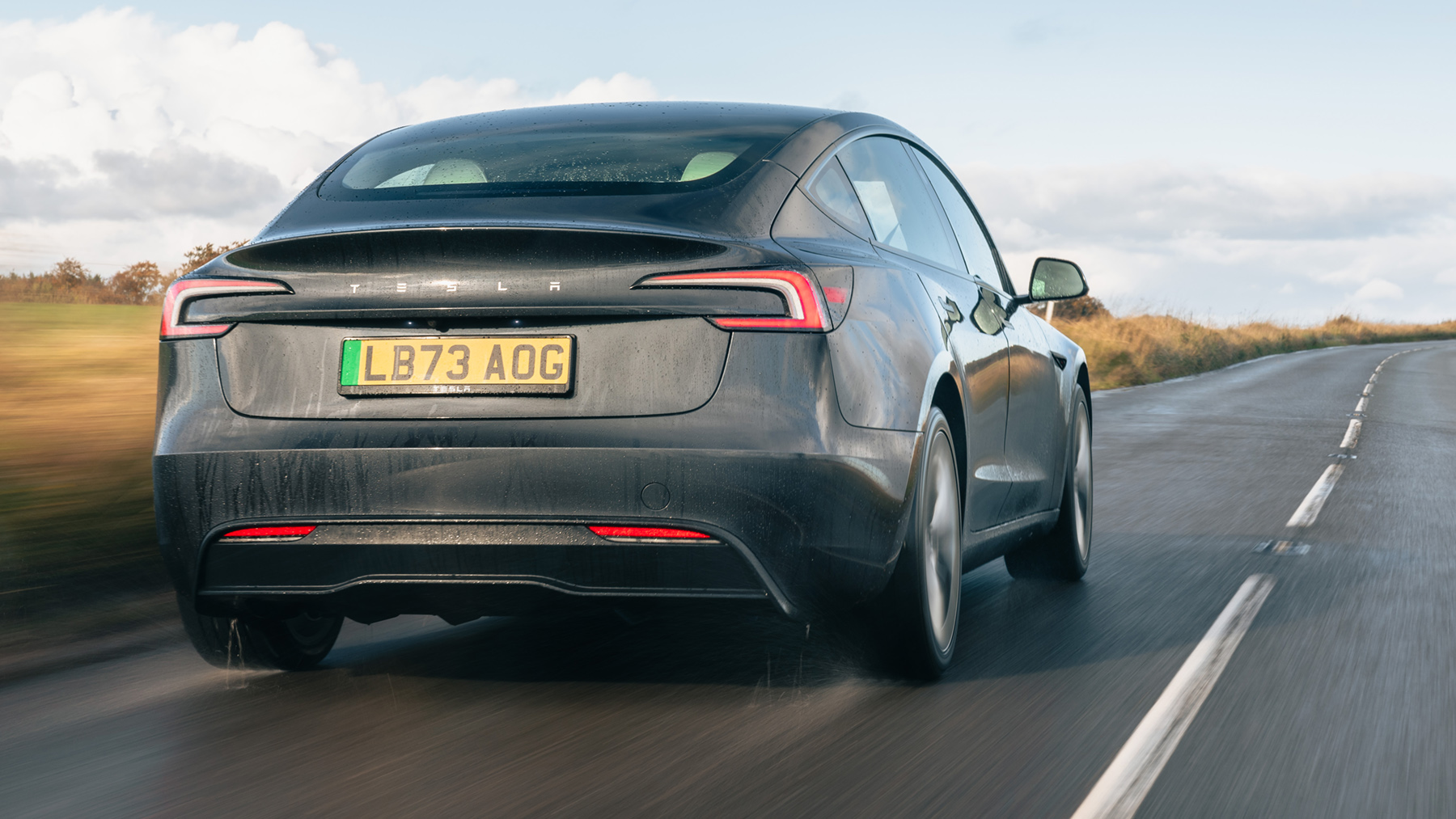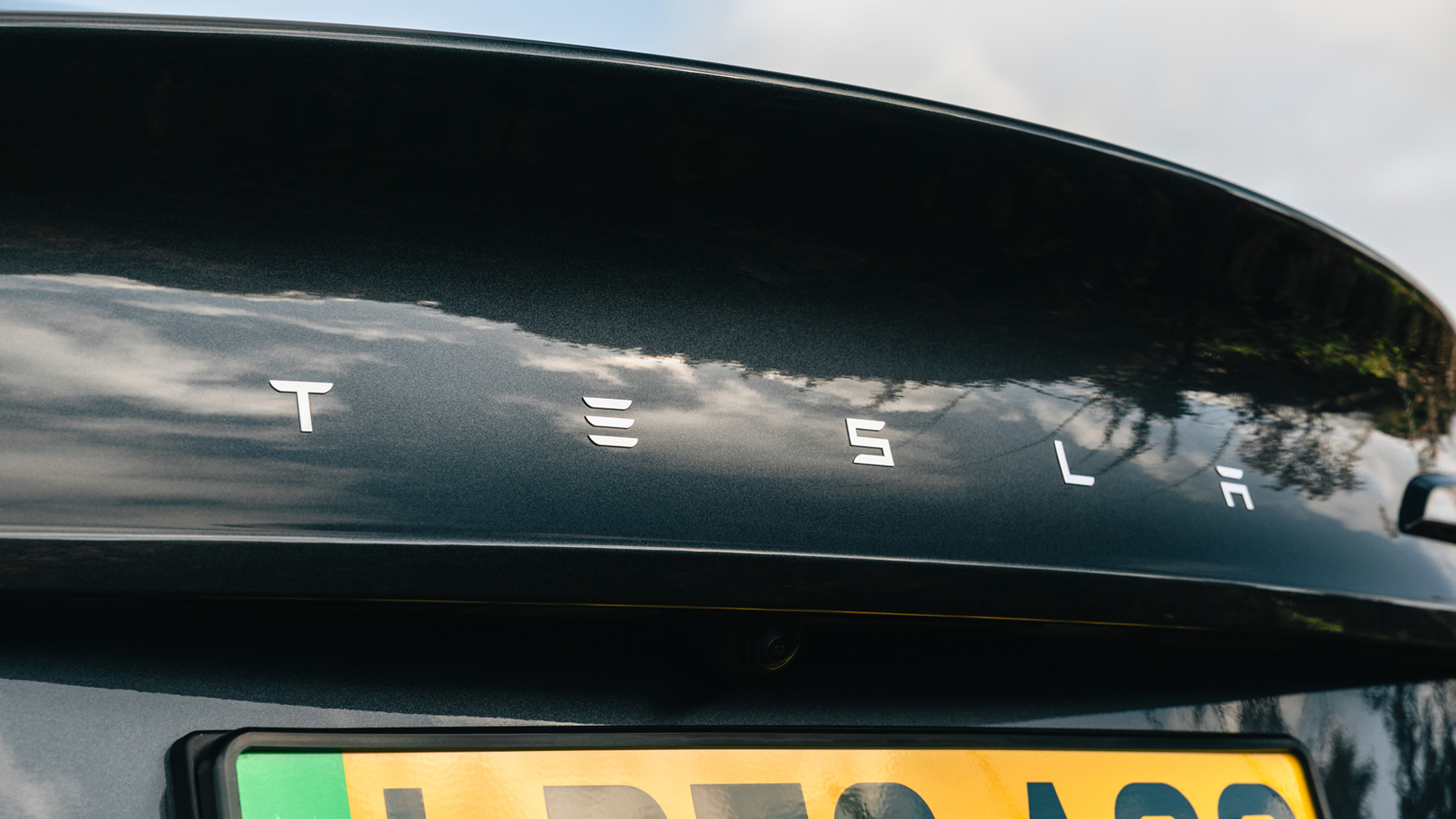
Good stuff
Great tech, efficient powertrain, solid performance, dependable infrastructure
Bad stuff
Not as sophisticated as rivals, too much touchscreen action, borderline dangerous driving setup
Overview
What is it?
There can’t be anyone who doesn’t know what a Tesla is: it’s incredible how the startup carmaker has managed to hype itself into a position of such prominence. What’s even more impressive is to look at other carmakers like Volkswagen (an old hand) and see how Tesla is the one setting the tone for electric cars. The disruptor has quickly become the establishment benchmark.
Anyway, this is the Model 3, Tesla’s entry saloon that was refreshed with a new look in 2023. A facelift might be something of a surprise for a car that’s been on sale since 2017, but Tesla doesn’t play by the usual rules, even if rivals would have an all new version on the way by now. In fact, the 3 is the only car along with the Model Y (the MPV version of the 3) that Tesla sells in the UK these days.
There are four 3s to choose from: a 279bhp/310lb ft base car with a 57.5kWh battery and rear-wheel drive, Long Range models with RWD and AWD that come with 75kWh batteries and 315bhp/332lb ft single motor and 491bhp/364lb ft dual motor setups respectively, and 351bhp from an all-wheel drive, dual-motor setup. The range topper is the Performance All-Wheel Drive model with 510bhp/547lb ft from its two e-motors.
It looks good, doesn’t it?
It certainly looks more sophisticated than the old one, with a subtle nose job up front and a bit of a tweak at the rear. Nothing drastic, but it makes for a much sleeker looking car. The headlights are much sharper and the whole effect makes it look like a more natural successor from the original Roadster back in 2008.
The tweaks also make for improved aero, which has boosted the Model 3’s range to 318 miles in the entry car and as high as 436 miles of WLTP in the Long Range RWD. The Long Range AWD and Performance cars offer 390 and 328 miles respectively. The 0-62mph performance drops from 6.1 seconds to 3.2 seconds as you climb the price list. Top speed has been pegged back to 125mph in all versions except the Performance, which tops out at 163mph.
Is everything else as we remember?
The Model 3 is as per inside... mostly. There’s a noticeable uptick in material quality, but we’re still not sure of the wisdom behind white seats in a family car. Still, our clothes didn’t leave any marks on the latest ones, so that’s positive.
The facelift changes are all about updating some of the hardware around the Model 3 – of course in these modern times if they want to update any of the software on your fancy electric car then they'll simply arrive over the air.
The recent price drops stick with the updated Model 3 too; £39,990 for entry car, another £5k for the Long Range RWD, £5k more to add the extra motor and topping out at a sniff under £60k for the Performance car.
So what is the refreshed Model 3 like to live with?
There’s a considerable amount of unlearning that needs to be done when you get into a Model 3, because this isn’t like other cars on the market. Most of the investment is up front, messing with the settings like a new mobile phone. It’ll take you at least half an hour just to work out how to adjust the seats, but at least the car will remember everything when you've got it all to your liking.
The latest company gimmick (presumably done for cost saving reasons rather than an earnest desire to innovate) is the indicators that have moved onto the steering wheel. In fact there are no stalks left around the Model 3’s wheel, and it’ll be a few thousand miles before your hand is cured of its Phantom Indicator Syndrome.
Mostly the new setup works fine, but as ever with Tesla it’s soon obvious the car hasn’t been tested in an international setting: it’s a nightmare around roundabouts and the tight turns you’ll find in most UK towns. Borderline dangerous, even. And all for something that should be abundantly simple.
Likewise the automatic wipers can’t cope with British mizzle at all, veering between ignoring fine rain completely or manic sweeping like you’re Gwyndaf Evans on the RAC Rally in 1994.
But I can still rely on Tesla's Superchargers, right?
The soothing balm on your Tesla ownership experience is the masterstroke of the company having a ready made charging network available that’s quick, convenient and simple to use. Some of the prime locations are getting very busy these days, but it helps that your car is able to tell you capacity levels. We'd love some of that action in other EVs. No messing around with apps or rubbing your contactless up and down a damp touchscreen, just reverse in, hitch up and you're away.
What about rivals?
The EV tech and infrastructure sets the Model 3 apart, but the likes of the Polestar 2 and BMW i4 are arguably better quality and more pleasant to drive. The Hyundai Ioniq 5, Ford Mustang Mach-E and Kia EV6 are also worth looking at, but the entry Model 3 is particularly well priced in this company.
Our choice from the range

What's the verdict?
Posed against po-faced competitors, Teslas are invariably the quick ones, the efficient ones, the fun ones with Fart Mode and the lucky ones least dependent on a haphazard charging ecosystem.
While the styling won’t be to all tastes and the driving dynamics aren’t all that memorable, it’s easy to see why the Model 3 has become a global standard setter for the EV experience. And at last the hardware seems to be catching up with the onboard tech.
This is the future we were promised – a car with sentience, a sense of humour, and a fresh take on the old norms. After trying this, your old repmobile will just feel a bit dull. The Model 3 has been in production since mid-2017, but even heading into old age, nothing on the market has yet managed to beat it on all fronts. While not without flaws, it is quite simply one of the most interesting, compelling cars in the world right now. We might even look back on it as the car that changed the way we all drive.
The Rivals
Trending this week
- Car Review
BMW iX3










